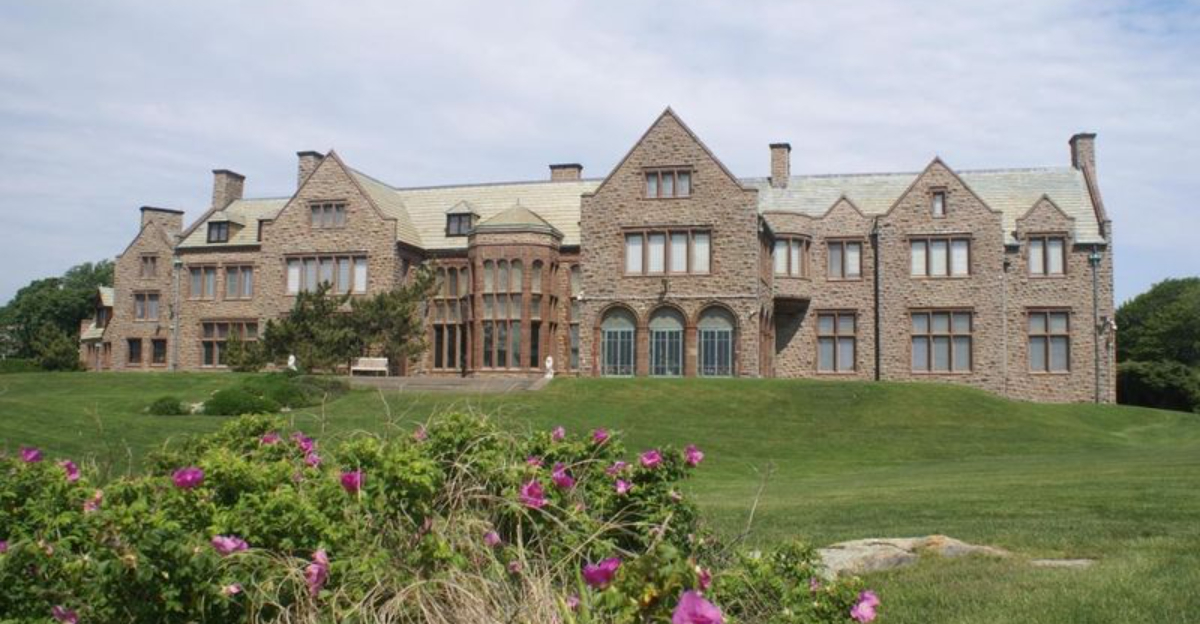During America’s Gilded Age, wealth wasn’t just earned, it was displayed in the grandest ways imaginable. I’ve always been fascinated by how industrial titans of the time, often called robber barons, built jaw-dropping mansions that felt more like royal palaces than homes.
These weren’t just luxurious, they were loud statements of power, packed with gold-plated ceilings, endless rooms, and over-the-top details. Walking through one today, you can almost feel the ambition in the walls.
Sure, they stirred plenty of controversy back then, but they also tell the story of a time when money talked, and it said everything in marble.
1. Biltmore Estate: America’s Largest Private Home

George Washington Vanderbilt II went big or went home with his 250-room French-inspired château nestled in North Carolina’s Blue Ridge Mountains.
Constructed between 1889 and 1895, this massive estate spans 175,000 square feet and sits on 8,000 acres. There’s nothing modest about its 35 bedrooms, 43 bathrooms, and 65 fireplaces.
Visitors today can marvel at the indoor swimming pool, bowling alley, and library housing 10,000 books that George probably never read.
2. The Breakers: Newport’s Ocean Palace
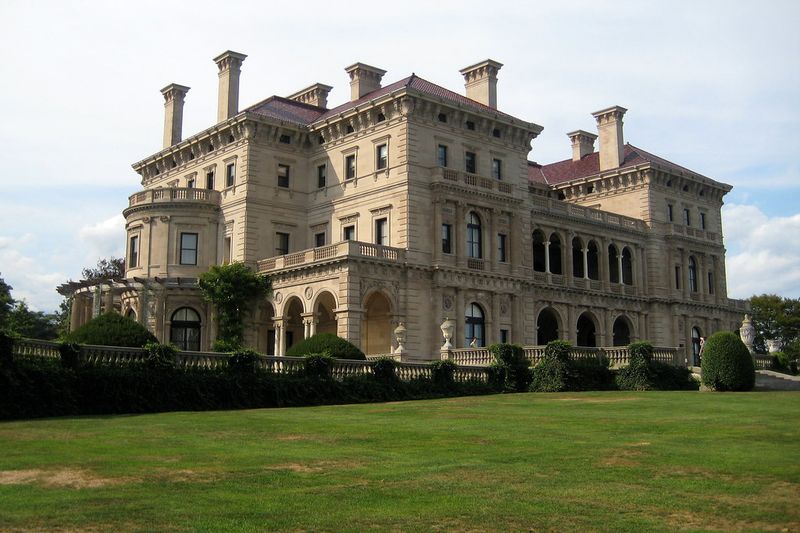
Cornelius Vanderbilt II showed off his railway fortune by building this 70-room summer ‘cottage’ in Newport, Rhode Island. If you’re thinking cozy cabin, think again!
This Italian Renaissance-style palace cost $12 million in today’s money. Sometimes called America’s Downton Abbey, The Breakers features platinum wall panels and mosaics imported from Italy.
Constructed between 1893 and 1895, it sits dramatically on a cliff overlooking the Atlantic Ocean, making sure everyone knew the Vanderbilts ruled the social scene.
3. Marble House: The Birthday Gift That Outdid All Others
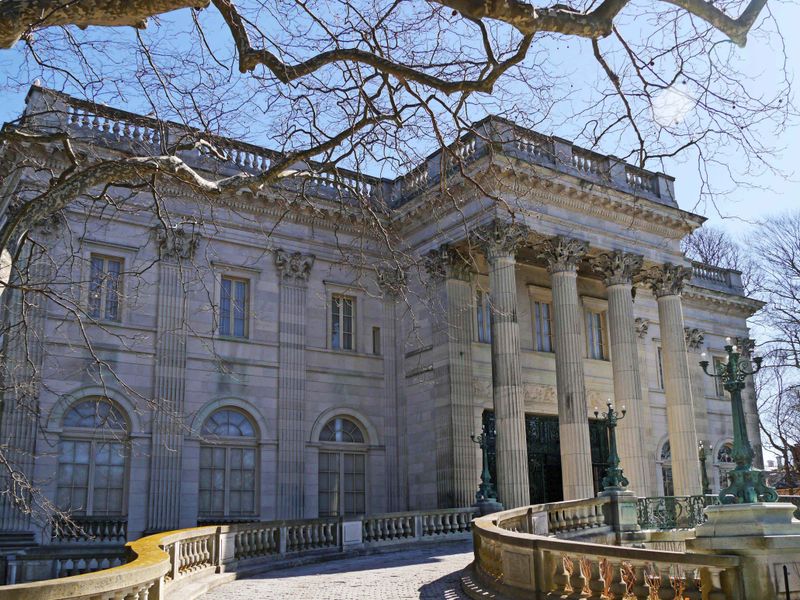
William K. Vanderbilt gave his wife Alva this ‘little’ present for her 39th birthday in 1892. Talk about setting the bar high for birthday gifts!
This Newport mansion used 500,000 cubic feet of marble and cost $11 million (that’s $300 million today). Though the marriage didn’t last, the house certainly did.
Alva kept it in the divorce and used it to host suffragette rallies. The gold-encrusted ballroom was modeled after the Hall of Mirrors at Versailles because nothing says ‘I’m wealthy’ like copying a king’s palace.
4. Kykuit: The Rockefeller Mountain Retreat
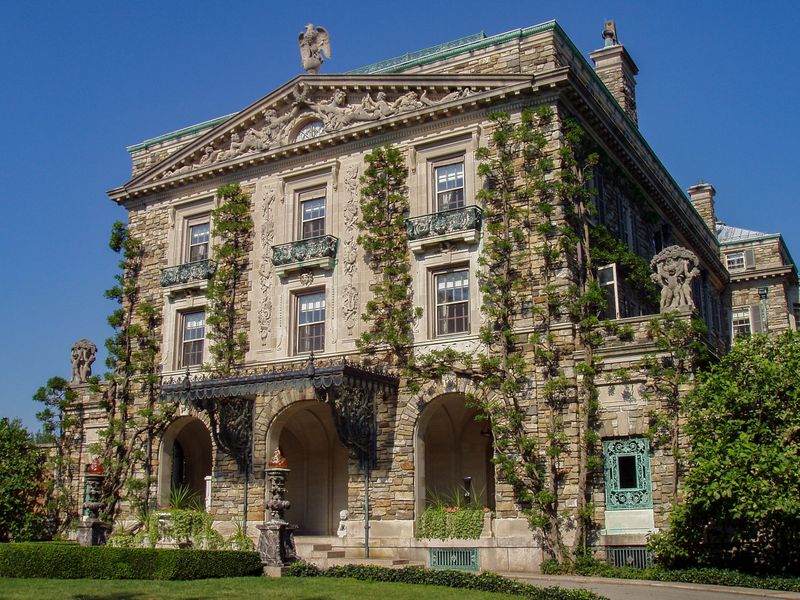
John D. Rockefeller, America’s first billionaire, built this 40-room Georgian mansion in Pocantico Hills, New York. The name means ‘lookout’ in Dutch, and boy, does it have views!
From its hilltop perch, Rockefeller could literally look down on everyone else. While other robber barons flaunted gold and marble, Rockefeller kept things relatively subdued.
The gardens feature his collection of modern sculptures, proving even oil tycoons had artistic taste. His coach house still displays his prized collection of rare automobiles, ironically bought with oil money.
5. The Frick Collection: From Home To Museum
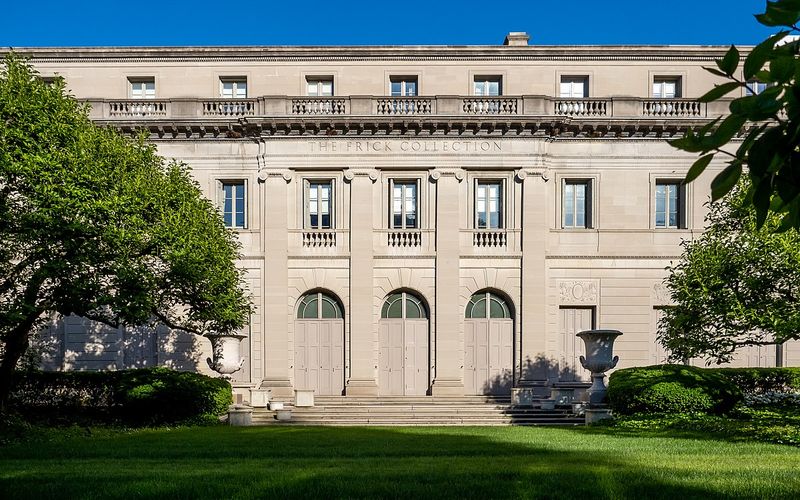
Henry Clay Frick, the steel magnate who brutally crushed the Homestead Strike, built this Manhattan mansion to outshine his former business partner Andrew Carnegie. Mission accomplished!
Completed in 1914, this 61-room palace cost a staggering $5 million. Where workers lost their lives making Frick rich, he displayed priceless art. The mansion houses works by Rembrandt, Vermeer, and Goya.
After his death, Frick’s will specified the house become a public museum, perhaps hoping art lovers would forget his brutal labor practices.
6. Lyndhurst: The Gothic Fantasy Castle

Railroad tycoon Jay Gould acquired this Gothic Revival mansion in Tarrytown, New York after making a fortune through stock manipulation.
Some called him the most hated man in America, but his taste in real estate was impeccable! Lyndhurst looks like a haunted castle from a horror movie, complete with pointed arches and flying buttresses.
Inside, the mansion features America’s first steel frame construction. The 67-acre estate includes a rose garden, greenhouse, and bowling pavilion where Gould probably plotted his next corporate takeover.
7. Boldt Castle: The Monument To Lost Love
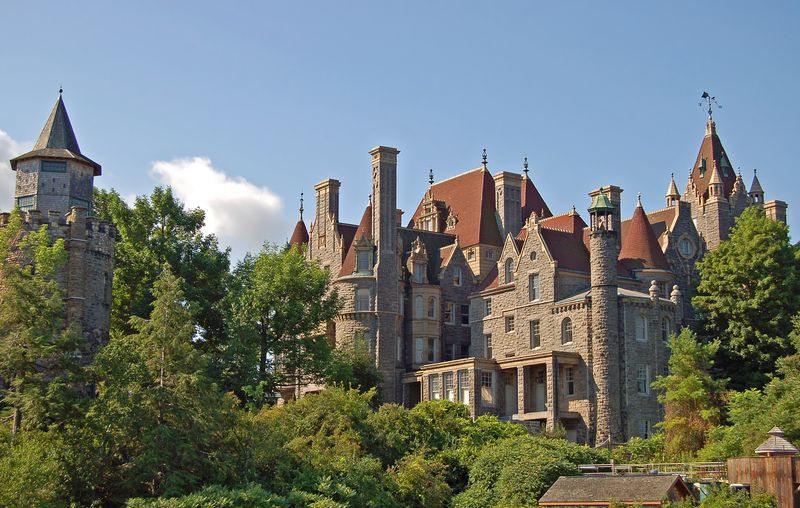
Hotel magnate George Boldt started building this 120-room castle on Heart Island in the Thousand Islands, New York, as a valentine for his wife Louise.
Tragically, Louise died suddenly in 1904 before it was finished. Heartbroken George immediately halted construction and never returned to the island.
For 73 years, the unfinished castle stood abandoned, weathering harsh winters and vandalism. Restored in the 1970s, the castle now welcomes visitors who come for the romance and stay for the tragic backstory.
8. Hearst Castle: The Inspiration For Citizen Kane
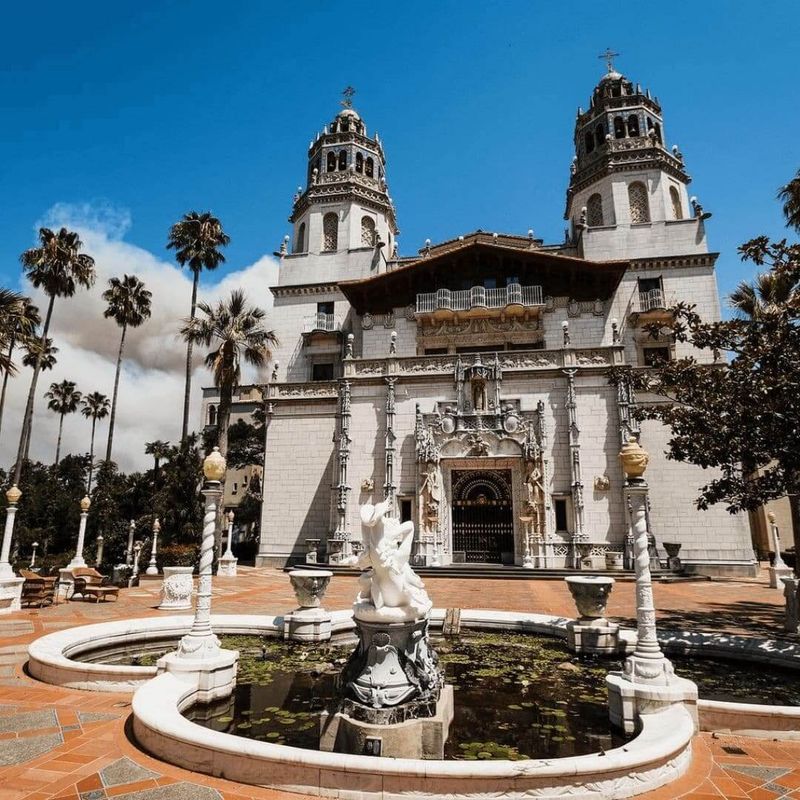
Newspaper tycoon William Randolph Hearst built this extravagant estate in San Simeon, California, which later inspired Orson Welles’ film ‘Citizen Kane.’
Located 250 miles from Los Angeles, guests had to be really special to receive an invitation to this remote palace. Hearst called it his ‘ranch,’ but with 165 rooms and 127 acres of gardens, it was anything but modest.
The Neptune Pool features actual Roman temples Hearst had dismantled and shipped from Europe. Even the zoo with exotic animals couldn’t fill the emptiness that inspired Kane’s ‘Rosebud’ moment.
9. Carnegie Mansion: The Librarian’s Palace
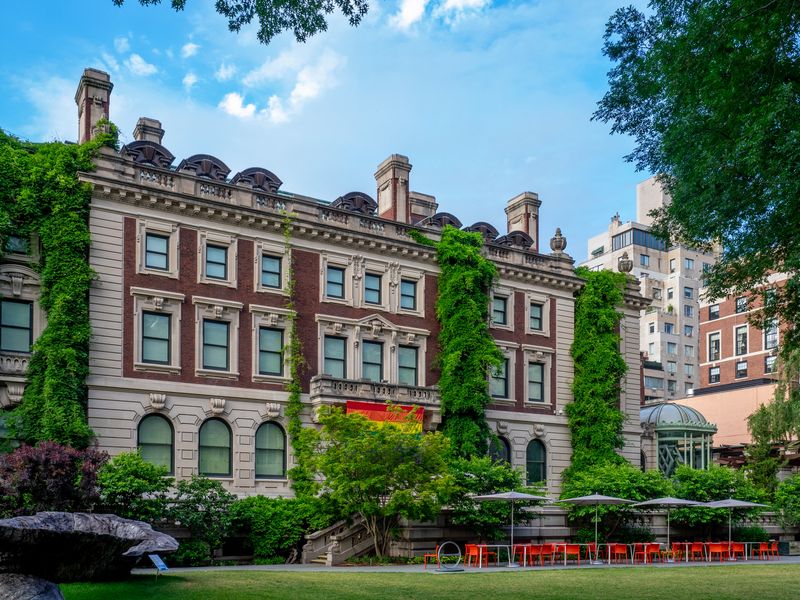
Andrew Carnegie built this 64-room Georgian mansion on Manhattan’s Fifth Avenue after selling his steel company to J.P. Morgan for $480 million.
While funding libraries across America, Carnegie made sure his own home had the most impressive library in the country. Though Carnegie wrote that ‘the man who dies rich dies disgraced,’ he still enjoyed his wealth in style!
The mansion was among the first in America to have a steel frame and central heating system. Today it houses the Cooper Hewitt Smithsonian Design Museum, where visitors can admire Carnegie’s taste without his steel dust.
10. Whitehall: The Palm Beach Winter Palace
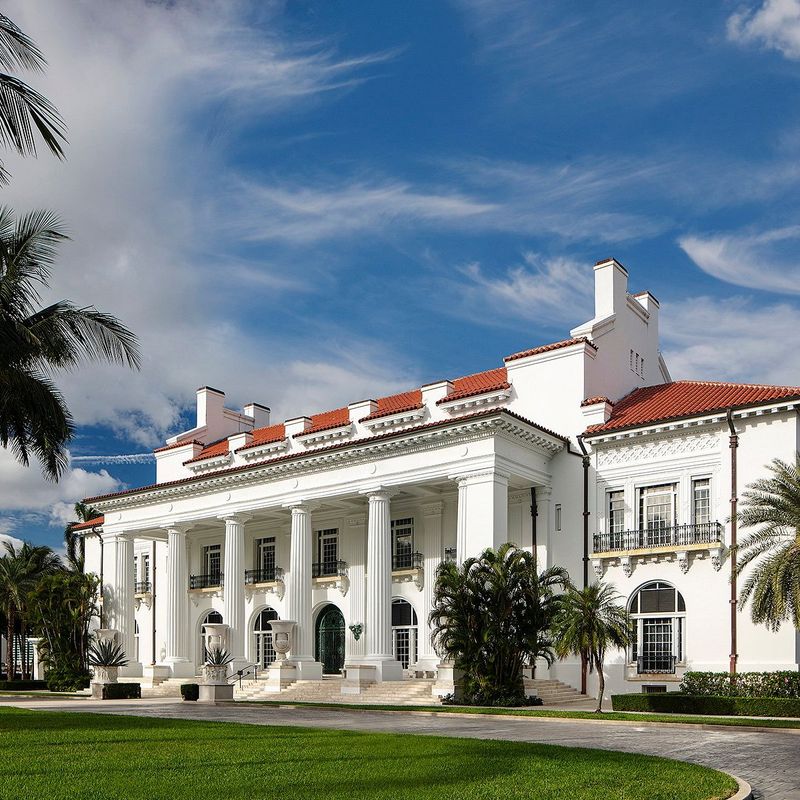
Henry Flagler, who co-founded Standard Oil with John D. Rockefeller, built this 75-room Beaux-Arts mansion as a wedding gift for his third wife. When you’re that rich, why stop at wife number two?
Locals called it ‘Flagler’s Folly’ when construction began in 1900 in then-undeveloped Palm Beach. The 100,000-square-foot winter home features a 1,249-pipe organ and gold leaf everywhere you look.
Flagler’s railroad transformed Florida into a tourist destination, and his mansion showed other wealthy folks what winter homes should look like.
11. Oheka Castle: The Great Gatsby’s Inspiration
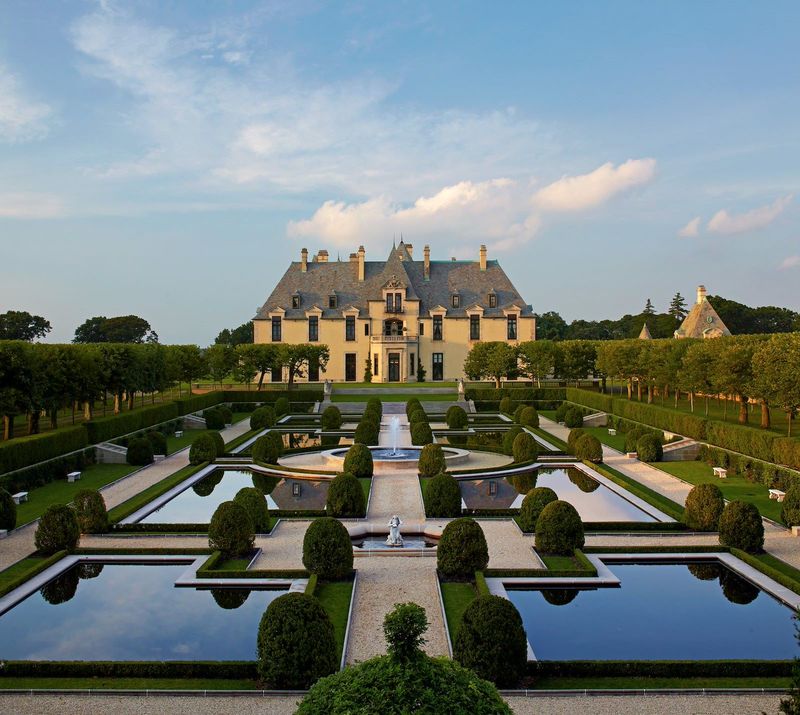
Otto Hermann Kahn built this French-style château on Long Island’s Gold Coast with 127 rooms and 443 acres. As the second-largest private home in America, it required a staff of 126 people just to keep it running!
F. Scott Fitzgerald allegedly used Oheka as inspiration for Jay Gatsby’s mansion. During Prohibition, the castle hosted legendary parties where champagne flowed freely despite being illegal.
After Kahn’s death, the mansion served as a military academy, retirement home, and now an exclusive hotel where modern guests can pretend to be Gatsby.
12. Shadow Lawn: The President’s Summer White House

Woolworth five-and-dime store founder F.W. Woolworth built this 130-room neoclassical mansion in New Jersey, later known as the ‘Summer White House’ when President Woodrow Wilson used it in 1916.
The original wooden structure burned down in 1927. Hubert Parson, Woolworth’s successor, rebuilt it in stone at a cost of $10.5 million. Every bathroom featured gold-plated fixtures and marble imported from Italy.
After the 1929 crash, Parson lost his fortune and the mansion, proving that even robber barons weren’t immune to economic disasters.
13. Pittock Mansion: The Western Frontier Palace
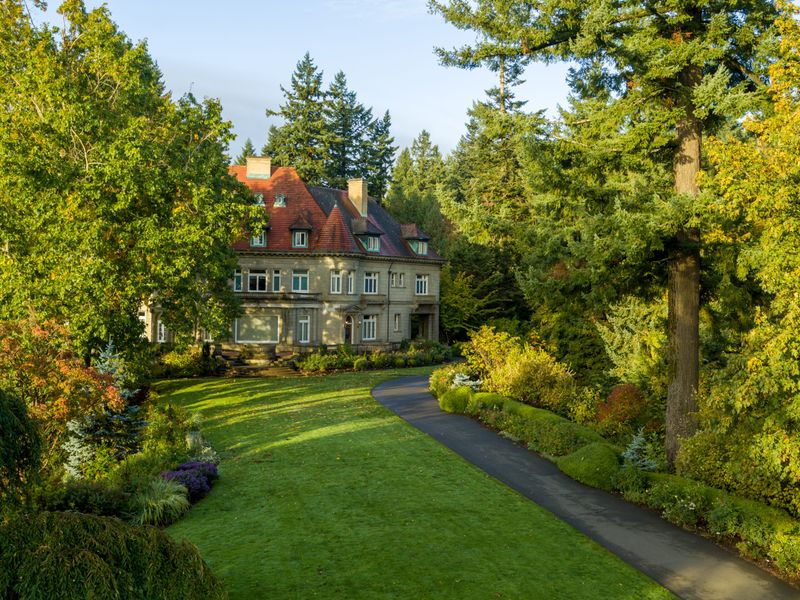
Henry Pittock, who made his fortune in Oregon’s lumber industry and as publisher of The Oregonian newspaper, built this 46-room French Renaissance mansion overlooking Portland.
After immigrating to the U.S. at age 19 with just a dollar in his pocket, Pittock became a millionaire through questionable land deals. The mansion features innovative technology for 1914, including intercoms, a central vacuum system, and indirect lighting.
Though Pittock only enjoyed his dream home for four years before his death, his distinctive pink château remains Portland’s most recognizable mansion, offering spectacular views of the city he helped build.
14. Cairnwood: The Steel Baron’s Country Estate
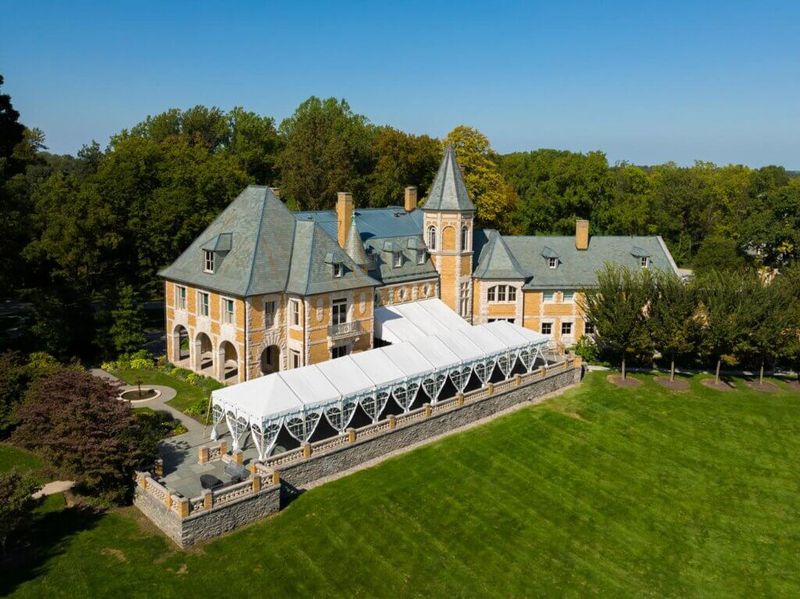
John Pitcairn, founder of Pittsburgh Plate Glass Company (now PPG Industries), built this Beaux-Arts country estate in Bryn Athyn, Pennsylvania in 1895.
Unlike some showier robber barons, Pitcairn used his mansion to promote his religious beliefs as a Swedenborgian Church member.
The mansion features 32 rooms designed by the same architects who created the New York Public Library. Pitcairn made his fortune in oil before moving to glass manufacturing, proving diversification worked even in the 1800s.
15. Rosecliff: The Party Palace Of Newport
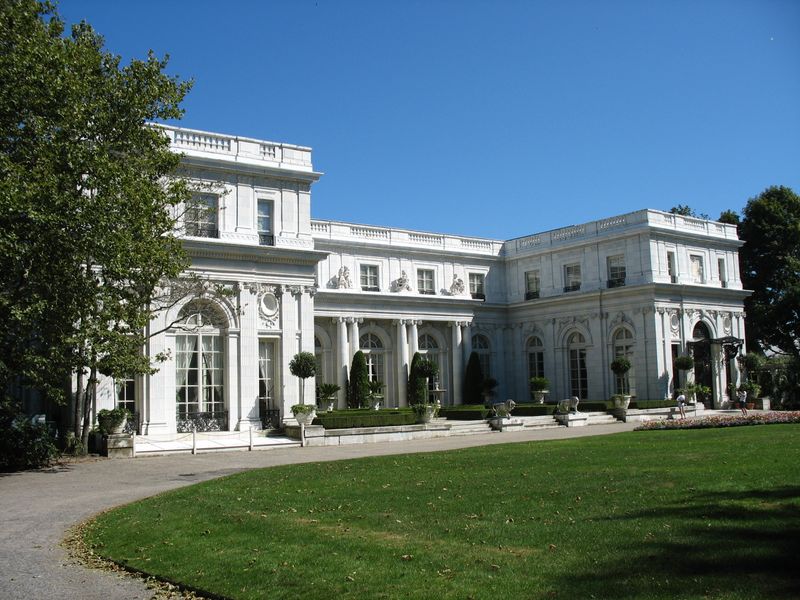
Theresa Fair Oelrichs, silver heiress and social climber extraordinaire, built this ‘cottage’ in Newport to outshine her neighbors. Modeled after the Grand Trianon at Versailles, Rosecliff cost $2.5 million in 1902, about $65 million today.
Famous for hosting the wildest parties in Newport, Theresa once filled the ballroom with tens of thousands of roses for her ‘White Ball.’
The mansion later served as a filming location for ‘The Great Gatsby’ and ‘True Lies.’ Though smaller than other Newport mansions at just 40 rooms, what Rosecliff lacked in size it made up for in extravagance.
16. Vanderbilt’s Rough Point: Ocean Avenue’s Forgotten Gem

Tobacco heiress Doris Duke inherited this Newport stunner from her father, but the mansion’s original glory days belonged to Frederick Vanderbilt, who commissioned it in 1887.
While less famous than other Newport cottages, this 49-room stone manor sits on a dramatic rocky promontory where waves crash just feet from the windows during storms!
Though abandoned for years after Duke’s death, the mansion now houses an impressive collection of European furniture, Chinese porcelains, and Belgian tapestries that would make any modern billionaire green with envy.
17. The Elms: A Summer Retreat in Newport
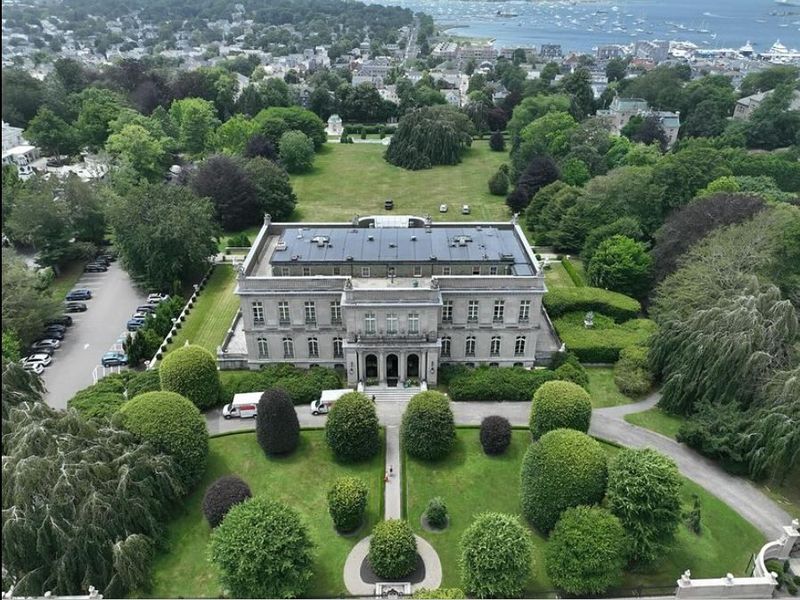
The Elms, a summer retreat in Newport, Rhode Island, was built for Edward Julius Berwind in the late 19th century. The Elms was the scene of many lavish parties and gatherings, reflecting the social prominence of its owner.
The lush gardens and fountains surrounding the mansion add to its charm, creating a serene environment despite the grandeur. The interior is just as captivating, with marble floors, intricate woodwork, and luxurious furnishings.
Interestingly, The Elms was among the first homes in America to be fully electrified, a testament to Berwind’s innovative spirit and desire to embrace modernity.

